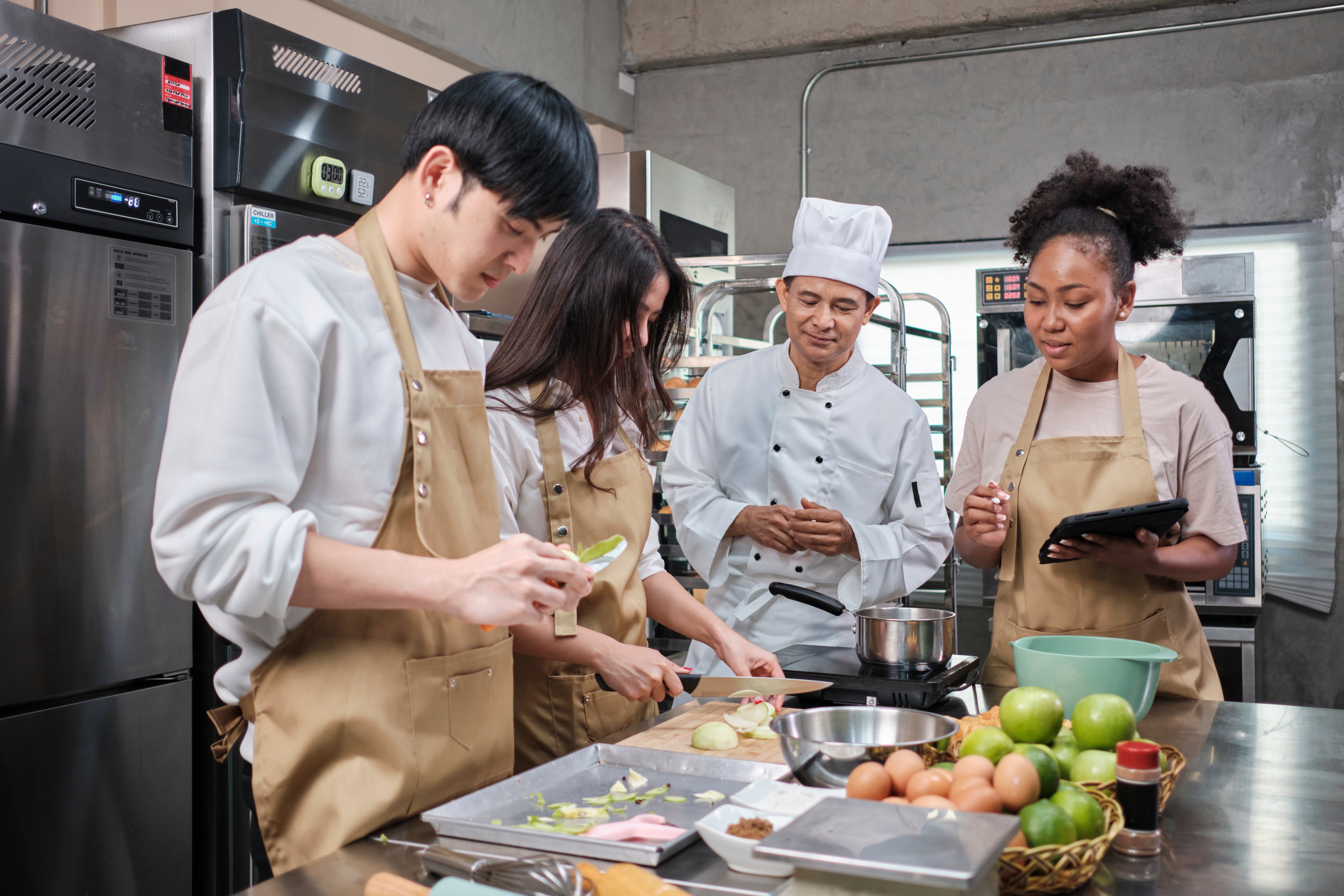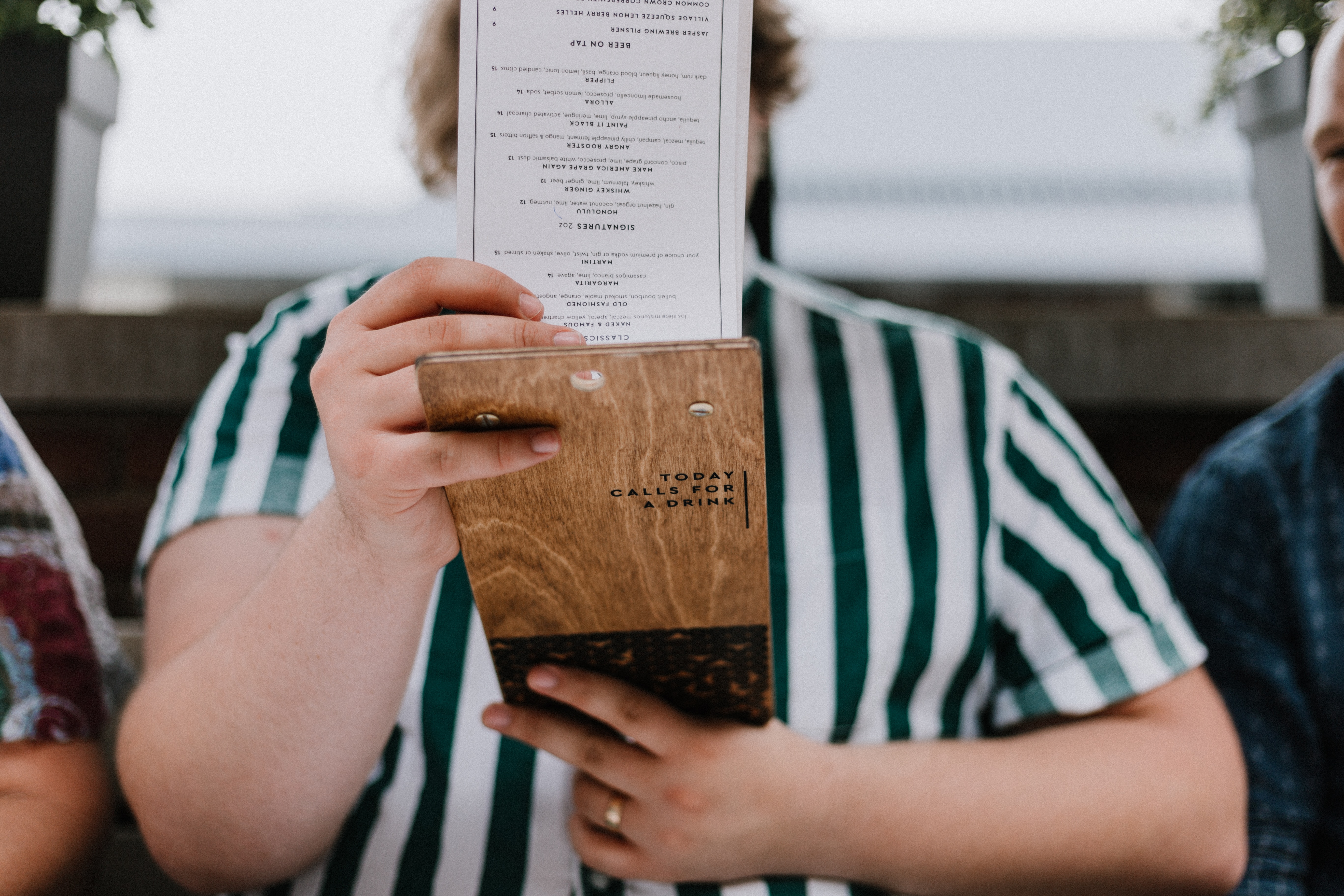This is an article by James Hacon that came through in the Propel Email Newsletter this morning (worth signing up for). The article is not published online so I’ve shared it here because there some great insights into a significant problem that Yumpingo is striving to alleviate…
Changing a menu seems to be one of the most dreaded activities for a restaurant or foodservice group. At an event I held recently for marketers in the sector almost everyone raised their hands to say it was one of the hardest parts of their job. Having been there myself, supported others in this process and seen inside enough hospitality groups it would seem for the most part it comes down to process – either not having one or people not following it. In one recent case, I watched from the sidelines as a client’s four-month process passed the year mark from initial research to the menu going live. Another client told me it is the only part of her job where she almost feels like giving up. Working in the business alongside her brother, she found herself getting caught up in the moment, arguing like they were kids again. I’ve seen many cases where internal politics and lack of agreement results in people changing their menus less often. That can’t be the answer. The frequency of menu change should be aligned with customer expectation and designed to ensure it works to maintain or increase the frequency of visits – by providing a better or changing range as well as creating talk for social media, marketing messaging and the media. The opportunity around the frequency and potential increases are individual by sub-sector and brand. For instance, with a grab-and-go I worked with recently the insight suggested daily or weekly specials would support an increase from one visit a week to two. In a casual dining brand, I’ve worked for the opportunity was increasing it from five times a year so seasonal menu changes seemed a better option. The key is to undertake your own research to understand your customers, their habits and their decision-making process. With more sensational press headlines, getting it wrong can result in far higher jeopardy than ever before. In the past month alone, there have been stories about McDonald’s adorning its doors with signs about buns containing traces of nuts after a recent recipe change, JD Wetherspoon axing seven supposedly “loved” menu items and Starbucks discounting its gluten-free breakfast sandwich. During my time at a contemporary dining brand, a popular steak dish was removed and the response was unbelievable, with more than a thousand social and email pleas for it to return. So how do you avoid the pitfalls of a dragging process, internal politics or disastrous customer feedback? Here are my top five considerations:
Understand your brand
The food is such an integral part of your brand. Understanding what your brand is, what it stands for and how far it should stretch is vital. The best brands will have a clear handle on the guiding principles, positioning, purpose and personality of the brand, which should act as a filter when deciding if menu items fit. A few years ago, many of the mass-market Italian brands went down the path of being homogenised in their offering without a clear personality. The result seemed to see a following of consumer food trends, even when in stark contrast to the brand positioning. The result saw discounting soar, as each competed heavily in the same space with little differentiation.
Listen to your customers
Most brands have become much better at listening to their customers in recent years, with great digital tools supporting the collection of customer feedback and offering support via social listening. I’ve seen brands receive hundreds of pieces of feedback per site, per month – real gold dust. Some of the best providers enable people to rate particular dishes, which is a great help. When you start to analyse this alongside your sales data it should give you a superb handle on hero dishes you might want to promote more and dishes you may want to consider changing. [editor: Yumpingo delivers over 4,000 pieces of feedback a month and it’s all dish-level, so even more gold dust] Once you’ve analysed this data, it’s time to understand what changes or additions your customers might like to see. Tactics for gaining this insight can be online surveys and discussion forums or face-to-face interviews and focus groups. If you’ve got a highly engaged audience on social media, reaching out via these channels and asking for ideas and inspiration is a superb way of engaging customers too. [Editor: Another thing Yumpingo can help with] If the menu change is about attracting new customers, don’t forget to consider how you approach non-customers within your research or you risk developing a menu that works for your existing customers but doesn’t appeal to broader or other groups of consumers. Consumer-testing potential dishes is a vital step that is often misused. Once you have some dishes to test you may want to have multiple variations or specifications to split test, depending on your methodology. For a more ongoing approach, you could consider a site where you trial food with customers on a regular basis. A number of key brands have specific sites they use for innovation that have a team well-versed in managing this added responsibility. Wahaca Test Kitchen in Shoreditch and Wagamama Noodle Lab in Soho are examples where a brand has taken it one step further by launching consumer-branded test sites. [Editor: Both powered by Yumpingo]
Market exploration
Understanding what’s happening in the market place among your contemporaries and competitors should help you develop ideas and dishes that are distinct and ensures you’re not missing a trick. We have many excellent research firms in our sector that regularly put out great reports – some of them free in conjunction with sponsors, others paid for. They provide a great overview of consumer and market place trends. With any process I’ve run or supported, I’ve always mined this thoroughly to support the decision-making and development process. A good starting point is to ask your suppliers what research and insight they have. They will often undertake their own projects and also have a view inside many other businesses, giving you a wealth of experience that comes from a place of authority. When we went about changing the children’s menu at Thaikhun a couple of years ago, we spent a lot of time looking at the broader casual dining market and what was happening in the children’s space. Back then we found an uninspiring offer parent accepted but didn’t love. Moving into more shopping centres we saw the opportunity to create a proposition our young customers and their parents would love. With consumer research and innovative thinking, the result saw an almost five-times increase in category sales and a couple of great awards for the brand. It also gave us a marketing platform that is still used by the brand today.
Get inspired
Mark Twain famously said: “There’s no such thing as plagiarising because there’s no such thing as originality.” While I’d like to think there is still white space left for original thinking, for the most part, food development is an evolutionary process that requires inspiration. There are many ways to get inspired. The first place to start is usually online research, searching Google and browsing blogs, Pinterest and Instagram are my usual tactics. Then it’s important to get out from behind a computer and head off on your travels. I host many study tours or safaris each year, here and overseas. Clients love them as a way to get guided and well-researched insight into concepts that provide great inspiration. I love to add an element of surprise, not just viewing restaurant concepts but also retail, food stores and street food, as well as meeting inspirational people from our sector and beyond.
Team engagement
To get the right buy-in from the team when the menu finally goes live it’s good practice to actively engage them in the process. The biggest mistake I see, however, is not limiting these too tight parts of the process to ensure it doesn’t slow the project. Too many cooks and all that. I’ve seen successful processes where the wider team are engaged during the understanding and inspiration stages, then re-engaged for dish testing. It’s then vital you communicate and train the new menu effectively once it’s complete. This should go beyond providing information – look to inspire the team around the new menu, explain the process and highlight the inspiration, linking it to their feedback. It surprises me when I hear teams aren’t given an opportunity to taste the food. Surely this is an absolute minimum to ensure teams can talk enthusiastically about the food itself? The project team should be kept tight with marketing, food and operational representation. As with any project, someone should have overall responsibility for the project delivery against an agreed timescale, with clear milestones. If the key decision-makers aren’t involved in the process daily, have regular update meetings and get their buy-in throughout the process to avoid it delaying projects by going backwards on certain steps. It’s better to over-communicate than under-communicate. This is particularly prevalent when owners, founders or key influencers within the business have a strong food background and therefore strong views. Whichever way you decide to manage your food or drink development process the key, of course, is it should move your proposition and brand forward. In most cases, the strategy should be “protect and grow” – keep your existing customers happy while developing parts of the menu that will attract new ones. Be sure not to throw the baby out with the bathwater.
Yumpingo takes the pain and uncertainty out of menu development and turns it into a process that takes weeks or days instead of months. The quantity and focus of our insights enable restaurants to make changes based on certainty instead of having to rely on gut instinct, allowing you to focus your efforts on other essential factors such as brand focus and market trends. It’s because of this, that Yumpingo is already being used by Wahaca and Wagamama, the two restaurants mentioned by James Hacon, who is leading the market in this area. If you’d like to see how we can help you in the same way please get in touch.
Share this:
Subscribe to our Newsletter
You May Also Like
These Related Stories

Menu innovation: The recipe for customer retention and restaurant success

How To Optimize Menu Performance With Advanced Analytics
